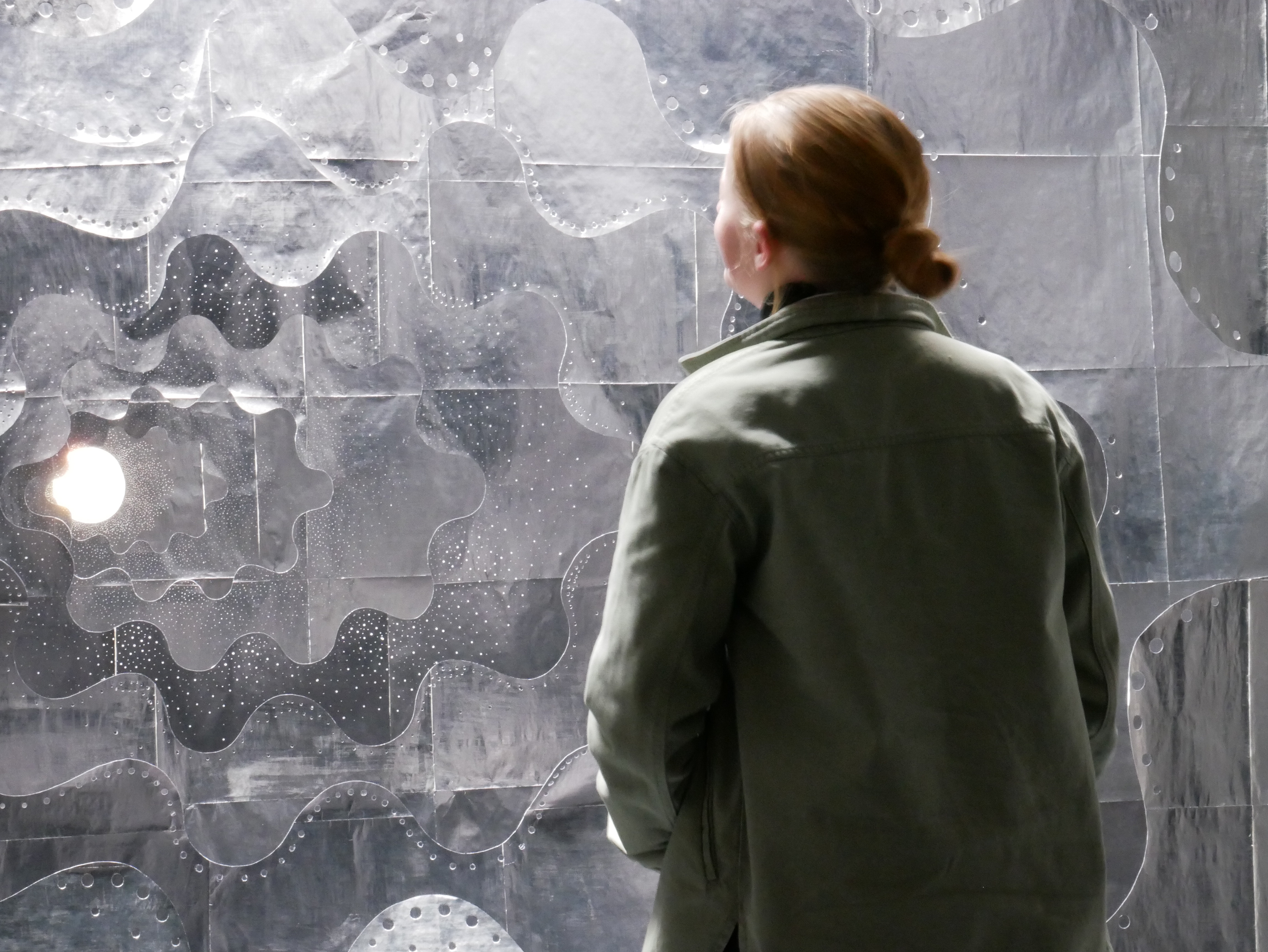


In the 2nd floor Vincka Struben presents a room-filling installation that turns all directions around. As a consequence the installation can only be entered by a transitional detour via the neighbouring Ringdijk 5.
“Finally the architectural ideal is a room in black marble, in which light enters only through orifices so well bent, that nothing on the outside can be seen through them, yet they illuminate or color the decor of a pure inside.”
(Gilles Deleuze, The Fold : Leibniz and the Baroque, 1988)
“Finally the architectural ideal is a room in black marble, in which light enters only through orifices so well bent, that nothing on the outside can be seen through them, yet they illuminate or color the decor of a pure inside.”
(Gilles Deleuze, The Fold : Leibniz and the Baroque, 1988)
The installation uses baroque architecture as a guideline, with light as an essential building element. The many curls, folds and shadows mark the transition from physical reality and materiality to an imagined space or even a vision. A frame is both a boundary and a connecting element between two worlds that normally do not touch each other. Are we looking at an Art Deco theatre decor, a lace embroidery, a micro-organism, a whale’s eye, Discomedusa, a ghost or the heavenly vault?
essay Mister Motley: